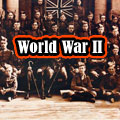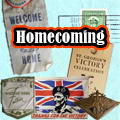Homefront Rationing

During wartime periods many commodities shrink in supply. Therefore, the logic behind consumer rationing is that it ensures equitable distribution of life necessities that fall short in supply. Consumer rationing had become a trend due to Canada’s commitment to Great Britain and its war effort. For example, the needs of the armed forces and excessive transportation and shipping costs put a strain on the Canadian economy. Thus, consumer rationing had become necessary. Supply shortages in 1942 forced the Canadian government to adopt consumer rationing techniques. In this year, tea, sugar, butter, meat, fruit based products and even gasoline underwent rationing.
Each Canadian was entitled to the following rations:
- Tea and/or Coffee: 1.5 ounces of tea or 5.5 ounces of coffee per week.
- Sugar: Half a pound per week as well as special seasonal allowances for housewives.
- Butter: Half a pound per week.
- Meat: Up to 2.5 pounds per week depending on the type of meat.
- Canned salmon: 1 meat coupon per week worth ¼ pound.
- Jam, jelly, syrup, canned fruit, etc.
- Commercial vehicles: ration tailored to meet company needs.

Ration booklets were issued to single adults and families. Each book carried coupons or tokens that could used for shopping. Coupons and tokens were torn out of the ration book in the presence of the storekeeper. It was illegal for a storekeeper to accept single, loose coupons. Only the people to whom the books were issued were allowed to use the coupons and, misuse of the ration book amounted in a $5,000.00 fine; or two years in jail; or both.
THINGS YOU SHOULD KNOW ABOUT RATION BOOKLETS:
- Each coupon in this book has an effective date. It cannot be used before that date, but it may be used any time after that date.
- On each sheet, use the coupon marked “1” first; the coupon marked”2” second, etc
- Write down the serial number of your ration book and store it in a safe place. If the book is lost, you must provide the serial number in order to receive a new book.
RATION NEWS

Newspapers and post offices always posted the latest ration edicts from Ottawa. For instance, canning guides provided directions on the type and amount of food allowed to be preserved in cans. Each single adult or family unit was required by federal law to apply for canning permission. Once applications were filled out, they were sent to local Rationing Boards for approval. The guides were available for pick up at the Post Office or Ration Administration offices.

Another edict proposed by Ottawa made it illegal for children who had not reached the age of 12 by 1 March, 1943 to receive coupons for coffee and tea.
Rationing in Canada
(adapted from Looking Ahead, Canadian Post-War Affairs: Discussion Manual No. 1 June,1945)
Relative to Europe, Canadians who experienced consumer rationing did not suffer much. While various products such as tea, coffee, butter, sugar, meats and gasoline were rationed, there was generally enough food for day to day living in Canada. In fact, the rationing system was used not because certain food products were simply not available (as in Europe), but rather in an effort to even out distribution.

The list of rationed goods in Canada was kept as short as possible. Rationing only affected foods that were widely used on a daily basis (see above list). In some cases, foods that were in desperate shortage were not even rationed. One of the reasons for such a regulation was to prevent administrative backlog. It was difficult to administer rationing in a huge country with a widely scattered population.

Another reason for rationing was related to transportation. Foods that were rationed were the foods that were scarce to Canadians due to limited transportation. As transport conditions improved however, rations were adjusted as some food products became more available and thus rationing became less necessary. One of the reasons for the greater abundance of food was due to the fact that food products destined for Europe had to be re-distributed at home simply because Atlantic shipping was overloaded. Thus, decreased rationing (due to greater availability of food) meant greater consumption for that particular food product.

Other reasons for food rationing were related to economic stability. Rationing slowed and regulated spending. This meant that a greater percentage of Canada’s national income could be used towards the war effort. Because of effective rationing, Canada did not have to borrow money from other countries in order to finance its war expenses. For example, gasoline rationing and the eradication of private car manufacturing meant greater conservation of commodities - commodities that were short in supply in other countries. One such product was rubber, considered a precious and rare commodity at the time.
Rationing demonstrated that the “economic mechanism of a community like Canada is so close-fitting that every alteration will have secondary effects.”
 |
 |
 |
_thu.jpg) |
_thu.jpg) |
_thu.jpg) |








